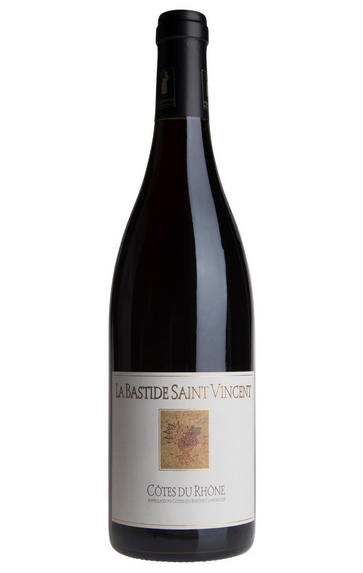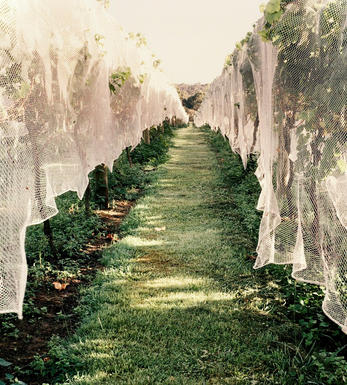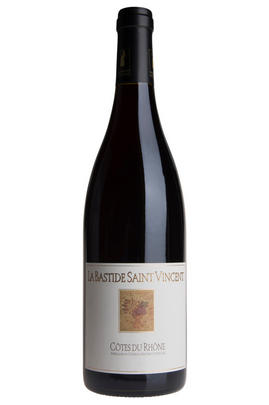
About this WINE

La Bastide St. Vincent
Flanking the evocatively named Dentelles de Montmirail, with vines on the equally evocative Plateau des Garrigues, La Bastide St Vincent is a delightful, family-owned wine domaine with 17th-century origins.
Laurent Daniel works 26 hectares across six villages and 23 parcels, growing the famous trio of Grenache, Syrah and Mourvèdre. He vinifies them separately in a combination of cement and stainless steel. He keeps the temperatures relatively low to allow full and generous expression of the fruit flavours.
Laurent’s wines are often powerful with a typicity and alcohol level that you might expect from the Southern Rhône. In 2021, however, the wines have a different appeal with freshness dominating. The resulting wines have lower alcohol yet still with good concentration and beautiful balance. We really enjoyed his 2021s. They are rather lovely wines allowing the minerality of his soils to shine through. Sadly, his production was 50% down this vintage, so secure a case while you can.

VDP du Vaucluse
The Vin de Pays du Vaucluse wine region lies in the western part of Provence (along the border with Rhone) in the department of Vaucluse. Mountains occupy a significant proportion of the eastern half of the department, with Mont Ventoux, also known as "the Giant of Provence", dominating the landscape.
Red, white and rose wines incorporate an array of southern French varieties, although the focus in on Grenache, Syrah and Cabernet Sauvignon.
The region has attracted investment by some leading winemakers from Chateauneuf-du-Pape, who have acquired vineyards on the slopes of Mont Ventoux.
The Brunier brothers from Domaine du Vieux Telegraphe, produce a wine at Domaine la Roquette which they have choose classify as Vin de Pays du Vaucluse, as the blend experiments with the addition of Cabernet Sauvignon to the dominant Grenache.
Another excellent ambassador of the region is Domaine de Chapoton.

Grenache/Garnacha
Grenache (Noir) is widely grown and comes in a variety of styles. Believed to originate in Spain, it was, in the late 20th century, the most widely planted black grape variety in the world. Today it hovers around seventh in the pecking order. It tends to produce very fruity, rich wines that can range quite widely in their level of tannin.
In many regions – most famously the Southern Rhône, where it complements Syrah and Mourvèdre, among other grapes – it adds backbone and colour to blends, but some of the most notable Châteauneuf du Pape producers (such as Château Rayas) make 100 percent Grenache wines. The grape is a component in many wines of the Languedoc (where you’ll also find its lighter-coloured forms, Grenache Gris and Blanc) and is responsible for much southern French rosé – taking the lead in most Provence styles.
Found all over Spain as Garnacha Tinta (spelt Garnaxa in Catalonia), the grape variety is increasingly detailed on wine labels there. Along with Tempranillo, it forms the majority of the blend for Rioja’s reds and has been adopted widely in Navarra, where it produces lighter styles of red and rosado (rosé). It can also be found operating under a pseudonym, Cannonau, in Sardinia.
Beyond Europe, Grenache is widely planted in California and Australia, largely thanks to its ability to operate in high temperatures and without much water. Particularly in the Barossa Valley, there are some extraordinary dry-farmed bush vines, some of which are centuries old and produce wines of startling intensity.



Buying options
Add to wishlist
Description
This easily accessible Côtes du Rhône displays generous plum, cassis and black cherry fruit profile with a black pepper and liquorice spice. The wine’s juicy palate is supported by ripe, integrated tannins. Drink now to 2021.
wine at a glance
Delivery and quality guarantee